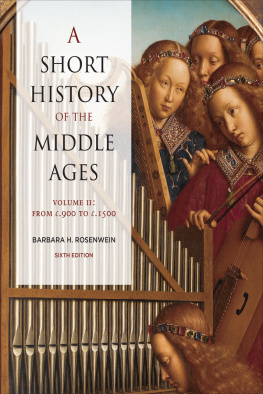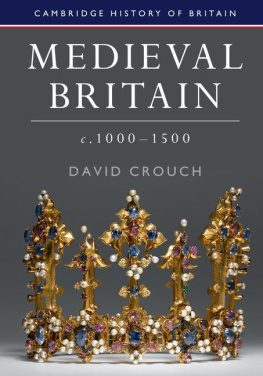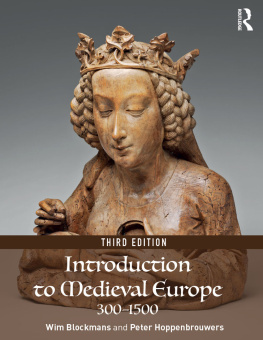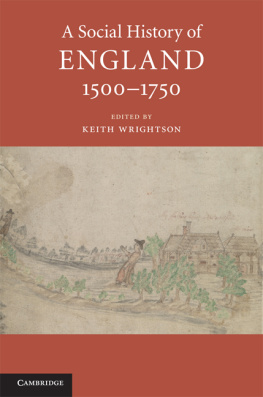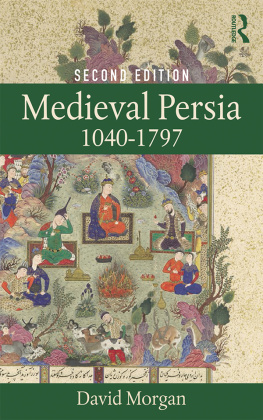Landmarks

A SHORT HISTORY OF THE MIDDLE AGES
A SHORT
HISTORY
OF THE
MIDDLE AGES
volume ii: from c.900 to c.1500
BARBARA H. ROSENWEIN
UNIVERSITY OF TORONTO PRESS
Toronto Buffalo London
University of Toronto Press 2023
Toronto Buffalo London
utorontopress.com
Printed in the U.S.A.
ISBN 978-1-4875-4698-4 (paper) | ISBN 978-1-4875-4700-4 (PDF)
ISBN 978-1-4875-4699-1 (EPUB) |
All rights reserved. The use of any part of this publication reproduced, transmitted in any form or by any means, electronic, mechanical, photocopying, recording, or otherwise, or stored in a retrieval system, without prior written consent of the publisher or in the case of photocopying, a license from Access Copyright, the Canadian Copyright Licensing Agency is an infringement of the copyright law.
Library and Archives Canada Cataloguing in Publication
Title: A short history of the Middle Ages / Barbara H. Rosenwein.
Names: Rosenwein, Barbara H., author.
Description: Sixth edition. | Also published together in one complete volume. | Includes bibliographical references and indexes. | Contents: Volume II : From c.900 to c.1500.
Identifiers: Canadiana (print) 20220266840 | Canadiana (ebook) 20220266875 | ISBN 9781487546984 (v. 2 ; softcover) | ISBN 9781487546991 (v. 2 ; EPUB) | ISBN 9781487547004 (v. 2 ; PDF)
Subjects: LCSH: Middle Ages. | LCSH: Europe History 4761492.
Classification: LCC D117 .R67 2023 | DDC 940.1 dc23
We welcome comments and suggestions regarding any aspect of our publications please feel free to contact us at .
Every effort has been made to contact copyright holders; in the event of an error or omission, please notify the publisher.
We wish to acknowledge the land on which the University of Toronto Press operates. This land is the traditional territory of the Wendat, the Anishnaabeg, the Haudenosaunee, the Mtis, and the Mississaugas of the Credit First Nation.
University of Toronto Press acknowledges the financial support of the Government of Canada and the Ontario Arts Council, an agency of the Government of Ontario, for its publishing activities.


For Sophie, Natalie, Joshua, Julian, and Benji, with love.
THE MEDIEVAL WORLD TODAY
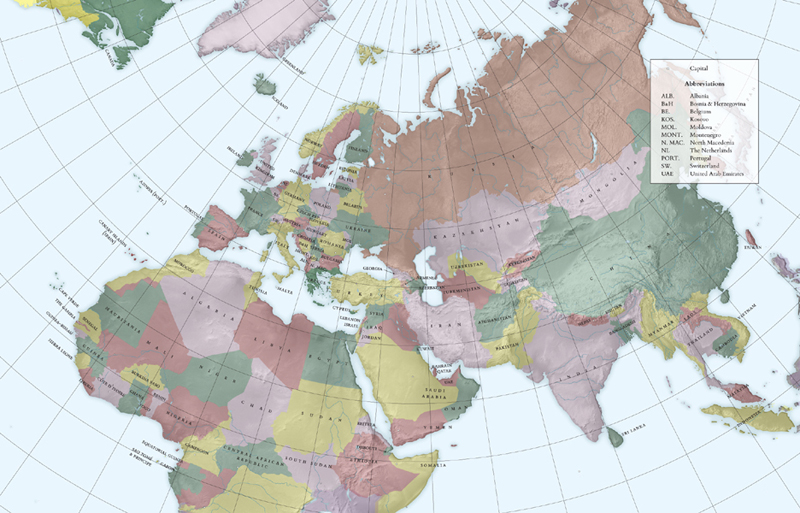
The union of the Roman Empire was dissolved; its genius was humbled in the dust; and armies of unknown barbarians, issuing from the frozen regions of the North, had established their victorious reign over the fairest provinces of Europe and Africa.
Edward Gibbon, The Decline and Fall of the Roman Empire
It may very well happen that what seems for one group a period of decline may seem to another the birth of a new advance.
Edward Hallett Carr, What Is History?
Contents
MAPS
PLATES
material culture: cloth and clothing
material culture: the making of an illuminated manuscript
GENEALOGIES
FIGURES
WEBSITE

| For practice questions about the text, maps, plates, and other features plus suggested answers please go to www.utphistorymatters.com There you will also find all the maps, genealogies, and figures used in the book. |
ABBREVIATIONS AND CONVENTIONS
Abbreviations
| c. | circa. Used to indicate that dates or other numbers are approximate. |
| cent. | century |
| d. | date of death |
| emp. | emperor |
| fl. | flourished. This is given when even approximate birth and death dates are unknown. |
| pl. | plural form of a word |
| r. | dates of reign |
| sing. | singular form of a word |
Conventions
All dates are ce / ad unless otherwise noted (the two systems are interchangeable). The dates of popes are not preceded by r. because popes took their papal names upon accession to office, and the dates after those names apply only to their papacies.
The symbol / between dates indicates uncertainty: e.g., Boethius (d.524/526) means that he died sometime between 524 and 526.
The Church as an abstract institution is capitalized. But when a church is a physical building in a particular place, the word is not capitalized. Similarly, the abstract State is capitalized, but when state refers to an individual polity, it is not.
ACKNOWLEDGMENTS
I thank Riccardo Cristiani for reading all chapters and providing pertinent suggestions and cautions. He also authored two Material Culture inserts, which I have lightly updated here. I am similarly indebted to Albrecht Diem, who read and commented on all the chapters and wrote the website questions. This sixth edition has benefited enormously from maps produced by medievalist and cartographer Erik Goosman, whom I thank most warmly. I owe a debt of gratitude as well to archaeologist Elizabeth Fentress, who generously read and critiqued my discussion of Volubilis/Walila, a North African site; and to sinologist Robert Hymes, who clarified various hypotheses about the original location of the medieval variant of the plague. I am equally grateful to all the readers, many anonymous, who made suggestions for improving earlier editions of A Short History of the Middle Ages. A full list of names of the many scholars who helped with particular sections would begin to sound like a roll call of medievalists, both North American and European; I hope they will forgive me if I thank them collectively here. At UTP, I am indebted to Judith Earnshaw, Natalie Fingerhut, Tania Therien, and Alexandra Grieve. Matthew Jubb at Em Dash Design beautifully enhanced the look of the book.
NOTE TO READERS
This new edition continues to stress the changing nature of history by making clear where historians have changed their minds or disagree about key issues. History is not a set of facts, though those (when known!) are useful. Equally important, if not more so, are the interpretations and connections that historians constantly make and remake of those facts.
In keeping with recent research, this edition also continues and expands its wide purview, placing new emphasis on global connections where relevant. Although the term Middle Ages was coined for a period in European history, I do not find it particularly meaningful except to refer to a chronological slice of time, around 300 to 1500. That period of time was equally experienced everywhere. But the particular focus of medieval history which I take to be the whole region once ruled by Rome, plus the successors of that Empire, plus the permutations experienced by those successors, including their conquests and their conquerors impels me to bring in the rest of the world where its history intersects with that of the heirs of Rome in important ways.

